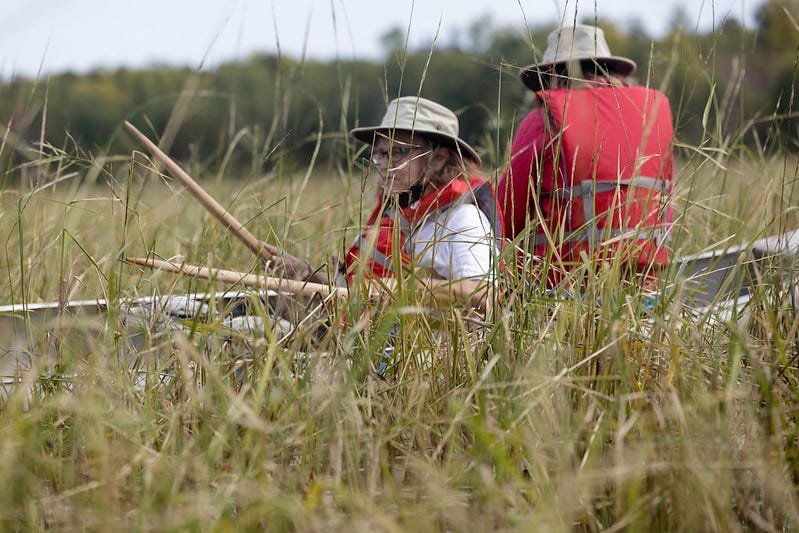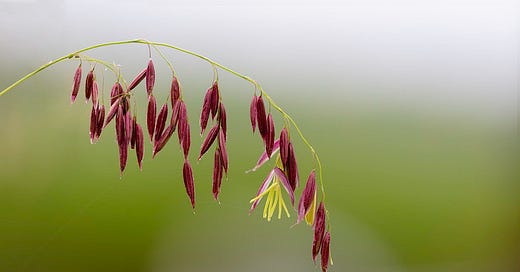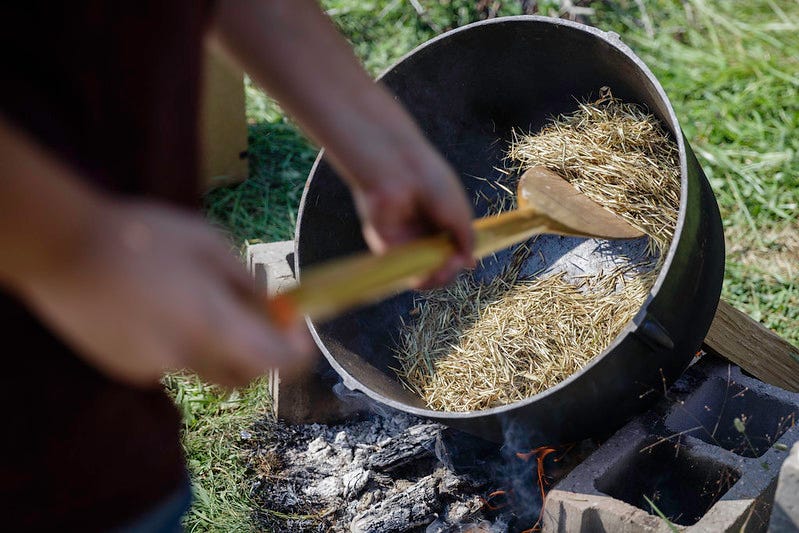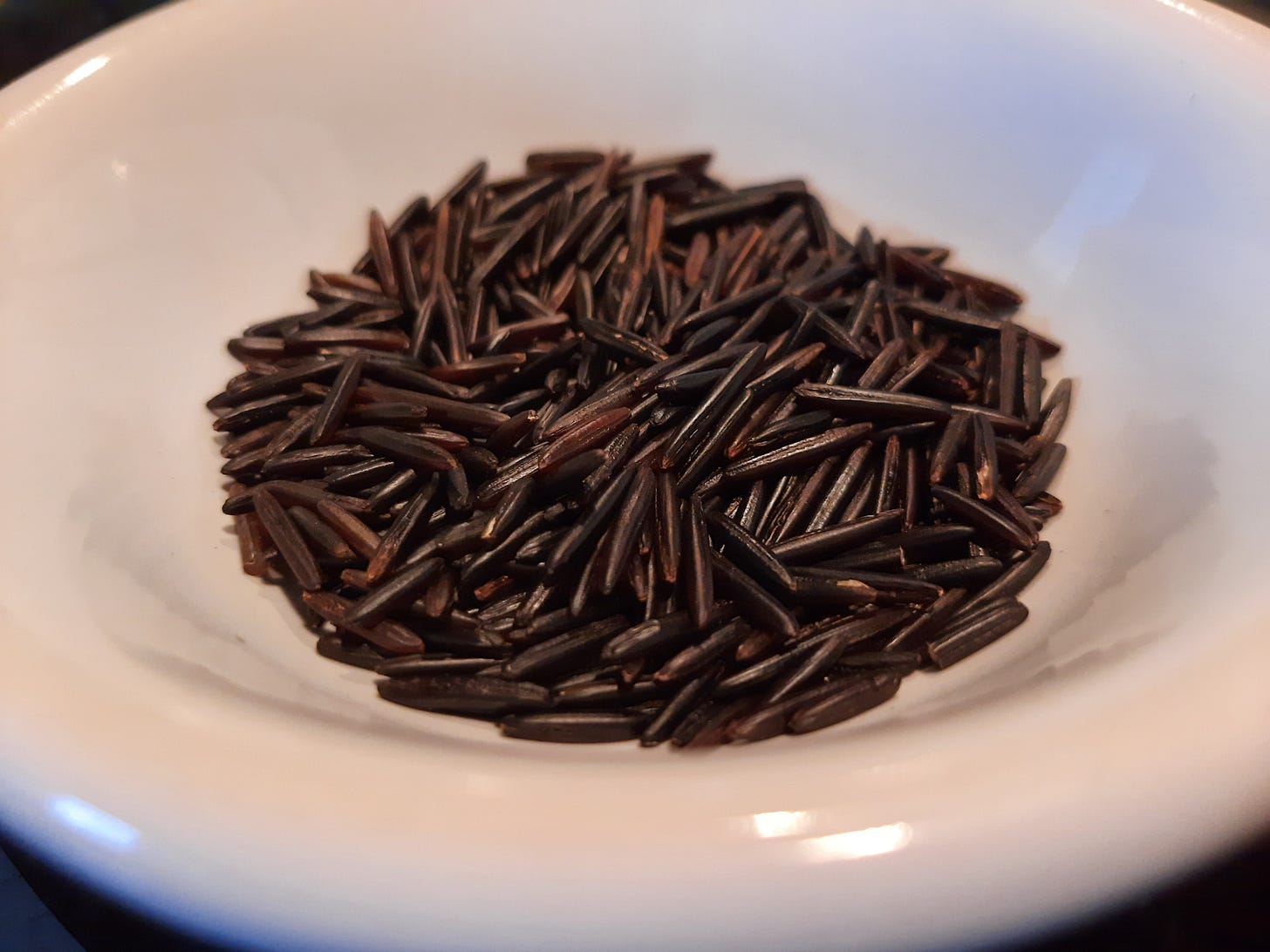While oysters disappeared from my Scandinavian family’s food traditions, wild rice held a central place next to the lefse on the holiday dinner table when I was a kid growing up in Minnesota. Every Thanksgiving, Christmas, and New Year’s, wild rice was on the menu.
Wild rice is Minnesota’s state grain.
Except it isn’t a grain at all. It’s a grass. It grows along the shores of freshwater lakes in shallow waters and along slow-moving streams. Archeologists have determined it has been used as a human food source in Minnesota for more than two thousand years.
While I think of wild rice as part of my family food traditions, it comes from Ojibway culture.
According to spiritual prophecy, the Ojibway moved west where they would find food growing on water. They call it Manoomin. The word is related to Manitou, which means Creator or Great Spirit. Loosely translated, Manoomin means good berries.
The Dakota call it Psiŋ and it is sacred food in their culture too. The conflicts between the Dakota and Ojibway in the century before white settlers arrived in Minnesota were about access to wild rice beds.

Don Kakaygeesick remembers learning to harvest wild rice when he was a kid. Between mid-August and the end of September, their family harvested wild rice on Lake of the Woods. Two to a canoe, they would paddle through the waving grasses, seeds dangling heavy from their stems. One person would maneuver the canoe with a paddle or a pole and the other would harvest the rice with two sticks, called knockers. Bending the heads of grass over the canoe with one knocker, Don would slightly tap it with the other, dropping the wild rice into the canoe.
Some rice falls into the water. This seeds next year’s crop.
Some rice is left to share with others.
And some falls into the canoe.
Of the rice which falls into the canoe, some will be shared, some will be stored, and some will be eaten at home.
There is a spiritual practice of reciprocity, generosity, and balance built into the relationship to this sacred plant.
Once harvested, the wild rice is removed from the canoe and spread out to dry on a tarp. Then it is parched, which preserves the rice.
It is placed in a large iron kettle or washtub over a fire and slow-roasted, constantly stirring with a wooden paddle. Parching determines the final color to the finished product. It is called “green” rice before it is parched, even though the colors of the grass seeds vary widely: pink, cream, tan, pale green.
Wild rice available in most grocery stories looks like this; the consistent shiny black finish to the seed grains is a byproduct of commercialized parching processes.
Hand-harvested wood-parched wild rice looks and tastes quite different. The flavor is nuttier and the texture is chewier.
Once wild rice has been parched, then it’s time for it to dance! The method of fanning, winnowing, or cleaning the rice varies, but for many the traditional method is for the rice to be placed in a shallow pit and people would walk or dance on it in their clean moccasins to break the hulls.
Don tells me his great-grandfather Kakaygeesick taught them using a wooden object shaped like a funnel that you shook up and down making the rice jump or dance, releasing the chaff and dust into the breeze. This method is calling “jigging” the rice.
Once the wild rice is danced clean, it is stored in a dry container where it will last for years.
While I began to eat and enjoy the taste of wild rice as a kid, I lacked any understanding of its spiritual significance to the Ojibway community and had no appreciation for the considerable skill involved in harvesting and preserving wild rice. But I associated the “good berries” with “holy days” and for that I credit my family.
Wild rice is a delicious main dish all by itself. Put the rice in a full pot of water and bring it to a boil. Then simmer for 30-40 minutes. It is ready to eat when it pops open like popcorn. Drain off the water, add butter, salt and pepper to taste. Chef’s kiss.









I went wild ricing a couple years ago with a group organized by 13 Moons and Fond du Lac Tribal and Community College. Not over-harvesting and leaving some for the next person was part of the learning.
So much history through yr story here thanks. I liked you showing the real vs paddy grown rice next to each other. Great visuals. It’s high protein too right? I can see why lake rice is so expensive now. Thank you Jill!